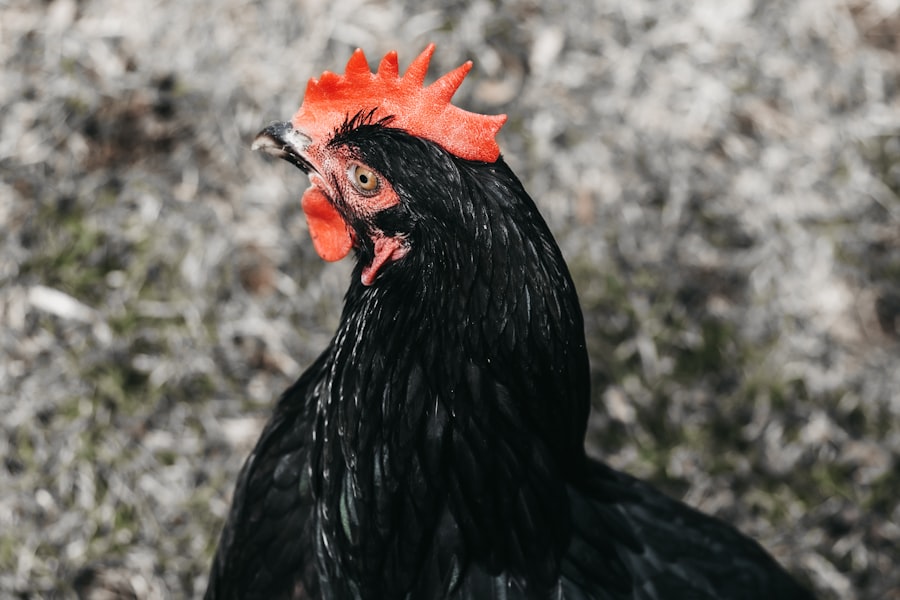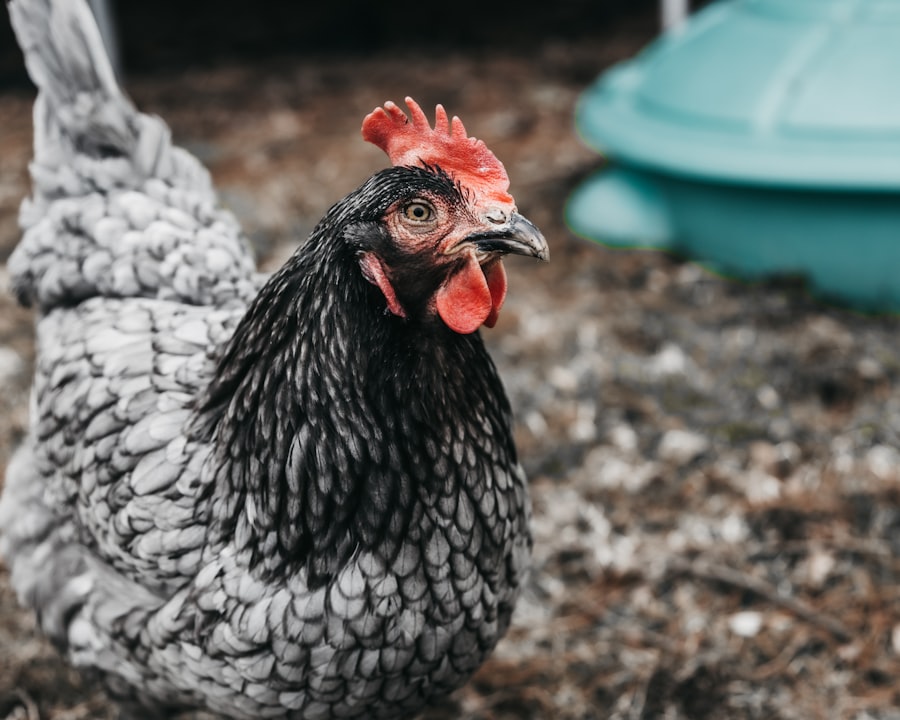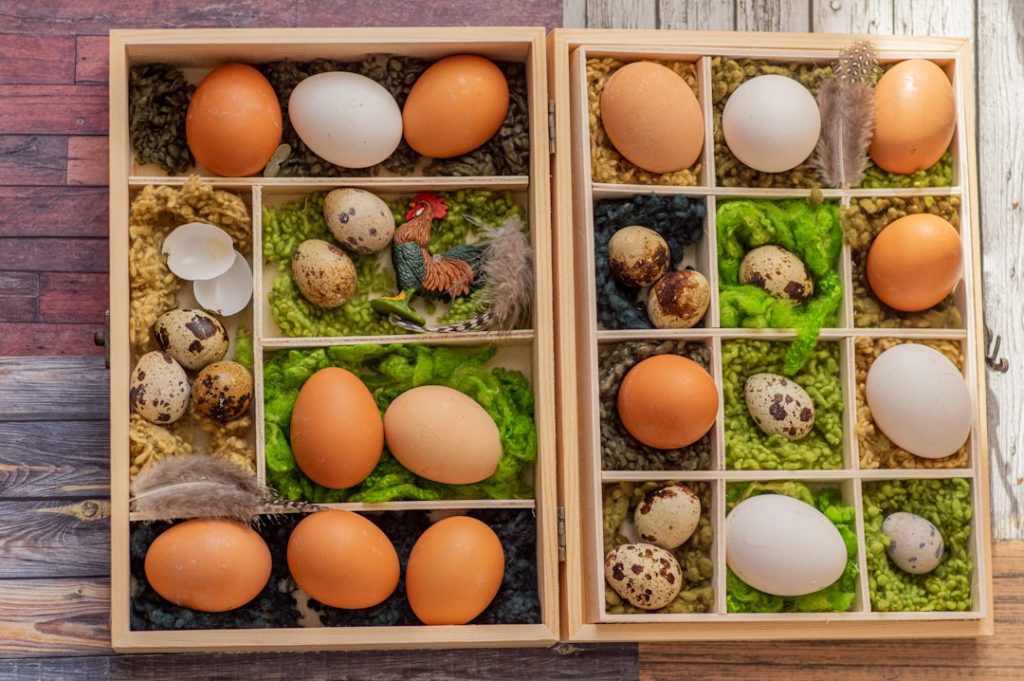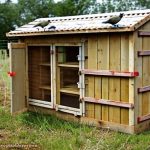Hawks are birds of prey renowned for their exceptional vision and sharp talons, which make them efficient hunters. These birds are commonly found in rural and suburban environments, where they hunt small animals including rodents, rabbits, and chickens. For backyard chicken owners, hawks represent a significant threat as they view chickens as accessible prey.
Identifying hawks can be challenging due to their ability to camouflage and their elusive nature. However, there are several indicators of hawk presence in an area, such as large nests in tall trees, sightings of large birds of prey circling overhead, and the unexplained disappearance of small animals. To effectively protect chickens from hawks, it is crucial to be able to identify these birds and understand their behavior.
Hawks are known for their stealthy hunting techniques, often attacking from above to catch their prey unawares. Recognizing the signs of hawk activity in the vicinity allows chicken owners to implement proactive measures to safeguard their flocks and prevent potential attacks. Understanding the threat posed by hawks is fundamental to establishing effective deterrents and ensuring the safety of backyard chickens.
Table of Contents
- 1 Implementing Physical Barriers: Building a Secure Chicken Coop
- 2 Scare Tactics: Using Visual Deterrents to Keep Hawks Away
- 3 Sound Solutions: Using Auditory Deterrents to Deter Hawks
- 4 Setting Traps: Using Live Traps to Capture and Release Hawks
- 5 Seeking Professional Help: Contacting Wildlife Control Services
- 6 Community Cooperation: Working with Neighbors to Keep Hawks at Bay
- 7 FAQs
Key Takeaways
- Hawks pose a threat to chickens and other small animals, and it’s important to be able to identify their presence.
- Building a secure chicken coop with physical barriers is an effective way to protect chickens from hawk attacks.
- Visual deterrents such as scarecrows and reflective objects can help keep hawks away from the chicken coop.
- Auditory deterrents like noise-making devices can also be used to deter hawks from the area.
- Using live traps to capture and release hawks can be a humane way to remove them from the vicinity of the chicken coop.
- Wildlife control services can provide professional help in dealing with hawk threats.
- Working with neighbors to implement hawk deterrents can create a more effective defense against hawk attacks.
Implementing Physical Barriers: Building a Secure Chicken Coop
Building a Secure Chicken Coop
One of the most effective ways to protect your chickens from hawks is to build a secure chicken coop with physical barriers that prevent these birds of prey from gaining access to your flock. A well-built coop should have a sturdy roof to prevent hawks from swooping down and snatching your chickens, as well as strong wire mesh around the sides to keep them out. Additionally, it’s important to bury the wire mesh at least a foot into the ground to prevent hawks from digging underneath the coop.
Choosing the Right Wire Mesh
When building a secure chicken coop, it’s crucial to consider the size and strength of the wire mesh used. Hawks are powerful birds with sharp talons, so using a heavy-duty wire mesh that is difficult for them to break through is essential. Additionally, reinforcing the coop with strong materials such as metal or treated wood can further deter hawks from attempting to breach the enclosure.
Creating a Safe Environment
By implementing physical barriers such as a secure chicken coop, you can create a safe and protected environment for your chickens, reducing the risk of hawk attacks and ensuring their well-being.
Scare Tactics: Using Visual Deterrents to Keep Hawks Away

Visual deterrents can be an effective way to keep hawks away from your property and protect your chickens from potential attacks. One common visual deterrent is the use of scarecrows, which can be placed in and around the chicken coop to create the illusion of a human presence and deter hawks from approaching. Additionally, reflective objects such as shiny tape or CDs hung around the coop can disorient hawks and make them less likely to target your chickens.
Another visual deterrent that can be effective in keeping hawks at bay is the use of predator decoys, such as plastic owls or hawks. These decoys can create the impression that a larger predator is present in the area, causing hawks to think twice before attempting to hunt in the vicinity. By strategically placing visual deterrents around your property, you can create a hostile environment for hawks and reduce the likelihood of them targeting your chickens.
Using visual scare tactics is a non-invasive way to protect your flock and can be an effective complement to other deterrent methods.
Sound Solutions: Using Auditory Deterrents to Deter Hawks
In addition to visual deterrents, auditory deterrents can also be effective in deterring hawks from targeting your chickens. One common auditory deterrent is the use of noise-making devices such as air horns or whistles, which can startle hawks and discourage them from approaching your property. Additionally, playing recordings of distress calls from other birds or predatory sounds can create a sense of danger for hawks and make them less likely to hunt in the area.
Another effective auditory deterrent is the use of ultrasonic devices that emit high-frequency sounds that are unpleasant for hawks. These devices are designed to be inaudible to humans but can be highly effective in deterring birds of prey from entering your property. By using sound solutions as part of your hawk deterrent strategy, you can create an environment that is unappealing to these predators and reduce the risk of attacks on your chickens.
Setting Traps: Using Live Traps to Capture and Release Hawks
In some cases, setting traps may be necessary to capture and remove hawks that pose a threat to your chickens. Live traps can be an effective way to catch hawks without causing them harm, allowing you to safely relocate them away from your property. When setting traps for hawks, it’s important to follow local regulations and guidelines regarding trapping and relocating wildlife, as well as to ensure that you are targeting the specific species of hawk that is posing a threat to your chickens.
When using live traps to capture hawks, it’s essential to place them in areas where hawks are known to frequent, such as near the chicken coop or in trees where they roost. Additionally, using bait such as live rodents or decoy birds can increase the likelihood of trapping a hawk. Once a hawk has been captured, it should be handled with care and released in a suitable location away from residential areas.
Setting traps for hawks should be considered as a last resort and used in conjunction with other deterrent methods to effectively protect your chickens.
Seeking Professional Help: Contacting Wildlife Control Services

Expert Solutions for Hawk Control
If you’re struggling to protect your chickens from hawk attacks, it may be time to seek professional help from wildlife control services. These experts have the knowledge and experience to assess the situation and implement effective strategies for deterring hawks and safeguarding your flock. They can provide valuable insights into the behavior of hawks in your area and recommend tailored solutions to address the specific threats posed by these birds of prey.
Comprehensive Services for Hawk Deterrence
Wildlife control services may offer a range of services, including trapping and relocating hawks, installing deterrent devices, and providing ongoing monitoring and support to ensure the long-term protection of your chickens.
Peace of Mind with Professional Help
By enlisting the help of professionals, you can gain peace of mind knowing that your flock is in good hands and receive expert guidance on how to effectively manage hawk threats on your property. Seeking professional help is a proactive step towards safeguarding your chickens and maintaining a secure environment for them to thrive.
Community Cooperation: Working with Neighbors to Keep Hawks at Bay
In some cases, hawk threats may extend beyond individual properties, affecting entire neighborhoods or communities. In such situations, working with neighbors to address hawk issues collectively can be an effective approach to keeping these predators at bay. By collaborating with neighbors who also keep chickens or have experienced hawk attacks, you can share knowledge and resources to develop a unified strategy for deterring hawks and protecting all poultry in the area.
Community cooperation can involve implementing coordinated deterrent measures such as installing visual scare tactics or sound solutions across multiple properties, creating a hostile environment for hawks throughout the neighborhood. Additionally, sharing information about hawk behavior and sightings can help raise awareness among residents and encourage proactive measures to prevent attacks on chickens. By working together with neighbors, you can strengthen efforts to deter hawks and promote a safer environment for backyard poultry owners in your community.
In conclusion, protecting chickens from hawk attacks requires a multi-faceted approach that combines understanding the threat posed by these birds of prey with implementing effective deterrents and seeking professional assistance when necessary. By identifying hawks in the area and understanding their behavior, chicken owners can take proactive measures such as building secure coops, using visual and auditory deterrents, setting traps when needed, seeking professional help, and working with neighbors to keep hawks at bay. With careful planning and strategic implementation of deterrent methods, it is possible to create a safe and secure environment for chickens to thrive without the constant threat of hawk attacks.
If you’re looking for ways to keep hawks out of your chicken coop, you may also be interested in learning about some interior ideas for chicken coops. Check out this article on chicken coop interior ideas for some inspiration on how to create a safe and comfortable environment for your chickens.
FAQs
What are some effective methods for keeping hawks out of the chicken coop?
Some effective methods for keeping hawks out of the chicken coop include using netting or wire mesh to cover the coop, installing scare devices such as reflective tape or predator decoys, and providing overhead cover for the chickens to hide under.
Are there any natural deterrents for hawks?
Some natural deterrents for hawks include planting tall trees or shrubs around the chicken coop to provide cover for the chickens, and allowing the chickens to free-range in areas with dense vegetation where hawks may have difficulty hunting.
What should I do if I spot a hawk near my chicken coop?
If you spot a hawk near your chicken coop, it’s important to take immediate action to protect your chickens. You can use scare tactics such as making loud noises or waving your arms to scare the hawk away, or you can bring your chickens inside the coop or provide them with cover to hide under.
Are there any legal methods for deterring hawks from my property?
In the United States, hawks are protected under the Migratory Bird Treaty Act, which makes it illegal to harm, harass, or disturb hawks or their nests. However, there are legal methods for deterring hawks from your property, such as using non-lethal scare tactics and providing cover for your chickens. It’s important to research and understand the laws and regulations in your specific area before taking any action against hawks.
Meet Walter, the feathered-friend fanatic of Florida! Nestled in the sunshine state, Walter struts through life with his feathered companions, clucking his way to happiness. With a coop that’s fancier than a five-star hotel, he’s the Don Juan of the chicken world. When he’s not teaching his hens to do the cha-cha, you’ll find him in a heated debate with his prized rooster, Sir Clucks-a-Lot. Walter’s poultry passion is no yolk; he’s the sunny-side-up guy you never knew you needed in your flock of friends!







